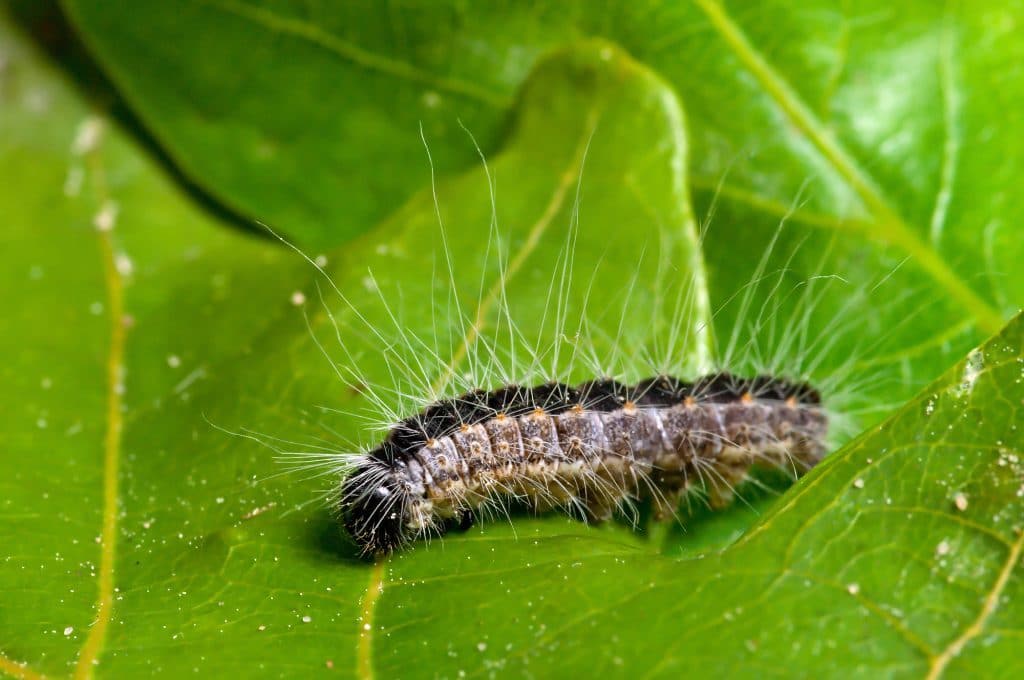As the weather is getting warm, nature is beginning to revive again. Of course, hiking and trekking are added to the plans for the weekend. If we have a sweet and curious four-legged friend with us, it is worth mentioning one of the possible dangers you might encounter. And every year their numbers are on the increase!
It is an “Oak processionary moth caterpillar”.
What is this Oak Processionary Moth Caterpillar?
With the Latin name Thaumetopoea processionea, these caterpillars live and feed on oak trees. They are harmful because of their small and sharp hair. This dense hair on their back contains Thaumetopoein, which in turn causes lesions on the skin and mucosa. These hairs can also be carried by wind (1).
In which months are they more common?
Since the caterpillars’ poison is effective over several years and molting nests can be found all year round in wooded areas, the hairs are a source of danger all year round.
Biologically, their metamorphosis depends on the air temperature. They prefer hot and dry seasons. Due to global warming, they are observed more and more in Germany every year. Depending on the temperature, caterpillars hatch from May to June, and after that; they make their pupae. The feathers on their backs are arrow-shaped and almost invisible. These feathers can be mechanically carried by the wind from caterpillars or their nests (2).
Is it harmful to my dog?
Not only harmful to your dog, but also to people! In humans, symptoms range from severe itching to bronchitis or asthma. Contact with these hairs may cause skin lesions and inflammation.
Normally, the hair of the dogs protects them. But their curious structures do the opposite! Since they smell and lick these caterpillars or their nests, the lesions are often shaped in the face area and especially on the tongues of our curious dogs. In addition, other symptoms can be observed in the case of exposure to these caterpillars. These are:
- Edema of lips and tongue
- Increase in saliva
- Inflammation in the mouth
- Redness of the eyes
- Vomiting
- Difficulty in breathing
- Inflammation or lesions of the skin
Although symptoms are usually limited to irritation, they may cause enough damage to the tongue to cause necrosis (Photo 1) (1,2).
If your dog ever gets in contact with these caterpillars or nests, contact your veterinarian as soon as possible.
How do I recognize these caterpillars?
They have very long white hairs which are stinging.
These caterpillars are live and feed on oak trees.
As well as being cautious around the oak trees, you can recognize them by their movement.
These caterpillars line up from their nose to tail with a leader at the forefront. The caterpillar group is generally organized as an arrowhead.
What should you do if your dog comes into contact with these caterpillars?
If you discover nests of the oak processionary moth in Germany, you should report these immediately to Straßen- und Grünflächenämtern and Bezirksämt respectively.
- Move your dog away from the area
- Protect yourself and other people from contact with the caterpillar or caterpillar nest.
- If you need to get this caterpillar from your dog’s hair, you can pick it up using thick-plastic gloves. Do not touch with bare hands.
- Clean the contact area with pressurized water
- If you contact with a caterpillar or its nest, change your clothes and take a shower to get rid of the caterpillar-hair.
- Supervise your dog against any allergic reactions and contact your veterinarian.
Do you want to be warned automatically about oak procession caterpillar moths and other dangers? No problem! We inform you free of charge with the PetLEO App: Download now.
References:
1- Carson, A., Irvine, R., & Foster, A. P. (2015). Oak processionary moth (Thaumetopoea processionea). Veterinary Record, 177(3), 79-79.
2- https://www.sdw.de/waldwissen/verhalten-im-wald/eichenprozessionsspinner/index.html

